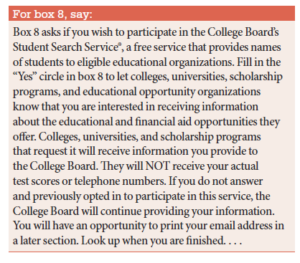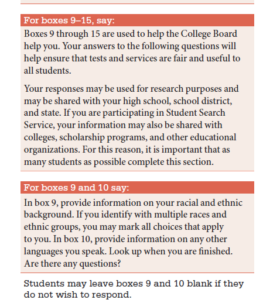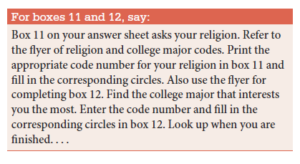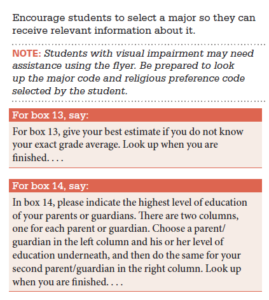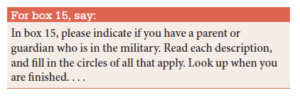 Warning to parents: PSAT/SAT day is Wednesday, April 5 in NYC and in many other schools around the state and the country. Yesterday's Washington Post Answer Sheet had a piece by Cheri Kiesecker, describing the practice of the College Board of collecting personal student data via the administration of these exams, and selling it without parental consent. The College Board sent in a response that is included at the end of her article.
Warning to parents: PSAT/SAT day is Wednesday, April 5 in NYC and in many other schools around the state and the country. Yesterday's Washington Post Answer Sheet had a piece by Cheri Kiesecker, describing the practice of the College Board of collecting personal student data via the administration of these exams, and selling it without parental consent. The College Board sent in a response that is included at the end of her article.
Interestingly, they did not deny that they sell students’ personal data – or in their words, “license” the data for a fee to institutions, for-profit corporations, and the military. You can see how they admit this on their website — at the cost of 42 cents per name. Selling this data is a violation of law in many states including NY and Colorado, and also a violation of the Student Privacy Pledge, which the College Board has signed.
And despite their claims to the Washington Post that “When students take the SAT and PSAT, the proctor instructions make clear that some items on the questionnaire are optional, and they may skip if they prefer not to answer,” nothing could be further from the truth.
First, there is nothing on the PSAT student answer sheet to let students know which questions they do not have to answer.
And if you read the script for proctors, as specified in the 2017 PSAT supervisors manual on pp. 10-12, you can see how evasive, confusing and ambiguous are the instructions that are supposed to be read aloud to students.
After asking students to fill out their (obligatory) names and addresses, this is what the proctor is then supposed to say: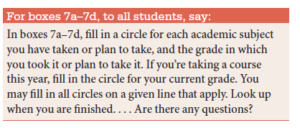

There is nothing in this script indicating that providing information about high school course work is purely voluntary and may be shared with third parties for a fee.Then come some really dicey questions, prefaced this way:
Though this part of the script does indicate that participating in the School Search program is voluntary, it does not mention which personal information aside from test scores or telephone numbers will NOT be shared with third parties and no indication that this data will be sold to various institutions and corporations and even the military at 42 cents per name.
Then, as a separate question come the doozies— with nothing in the script to suggest that answering these questions are voluntary. Worse yet, students have already been asked to check off the box as to whether they want to participate in the Student Search, without having yet seen the information that may be shared.
There is one mention above that students “may leave” questions blank related to their racial and ethnic backgrounds – but this is not part of the script that proctors are asked to read aloud.
Now are other even more personal questions, with no hint at all either in the read-aloud script or otherwise that answering these questions are optional:
Above are questions about the students’ religion, potential major and grade point average, the education level of their parents or guardians, and if their parents have a military background. The latter information is probably very valuable to the Department of Defense, which according to the NYCLU, purchases this information from the College Board for military recruiting purposes.
Not only is nothing mentioned about the voluntary nature of these questions, but the instructions tell the proctor to encourage students to fill in the question asking their potential college major, and help them identify the “code” for their religion if they have trouble seeing it.
To make things even more confusing, the College Board then mixes in questions asking the student’s birth date and gender — which are required to be filled out, with no indication of any change in the nature of these questions.
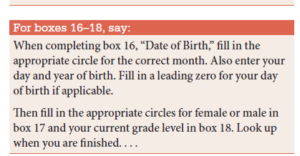 Then they ask for the student ID number or social security number, even though the latter is considered very sensitive.
Then they ask for the student ID number or social security number, even though the latter is considered very sensitive.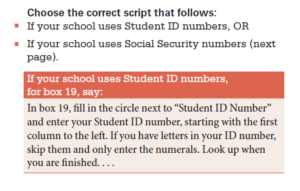 So you can see that this script for proctors is written in the most ambiguous way possible, with voluntary questions mixed in with required ones, and no clear indication which is which or that much of this personal data will be shared with third parties for a fee.
So you can see that this script for proctors is written in the most ambiguous way possible, with voluntary questions mixed in with required ones, and no clear indication which is which or that much of this personal data will be shared with third parties for a fee.
I have yet to see the script or the answer sheet for the SAT — as opposed to the PSAT. If anyone has a copy please send it to leonie@classsizematters.org
I have heard that the questions include the now politically sensitive question about their citizenship, which may be the reason that in NYC, principals have been told not to include the Student Data Questionnaires as part of their administration of the SAT or PSAT exams — and to skip #11 on the answer sheet, which relates to religion, but not any of the other questions. Indeed, the online Student Search questionnaire has questions about citizenship and more. But there may be other personal questions on the answer sheet and in the proctor’s instructions so beware.
If your child has already filled out these questions, either online or in a previous administration of the exams, you can still opt out of further disclosures. According to the College Board,
“If at any time you change your mind and want to stop participating, please contact us via email or at (866) 825-8051. Please note that any eligible participating organizations that have already received your name and other data may continue to send you information, but your information will not be included going forward from the time you elect to opt out.” There is also an opt-out form here.
